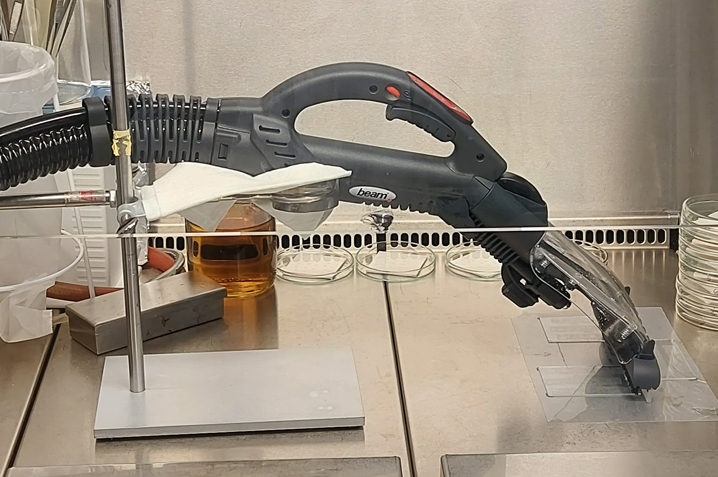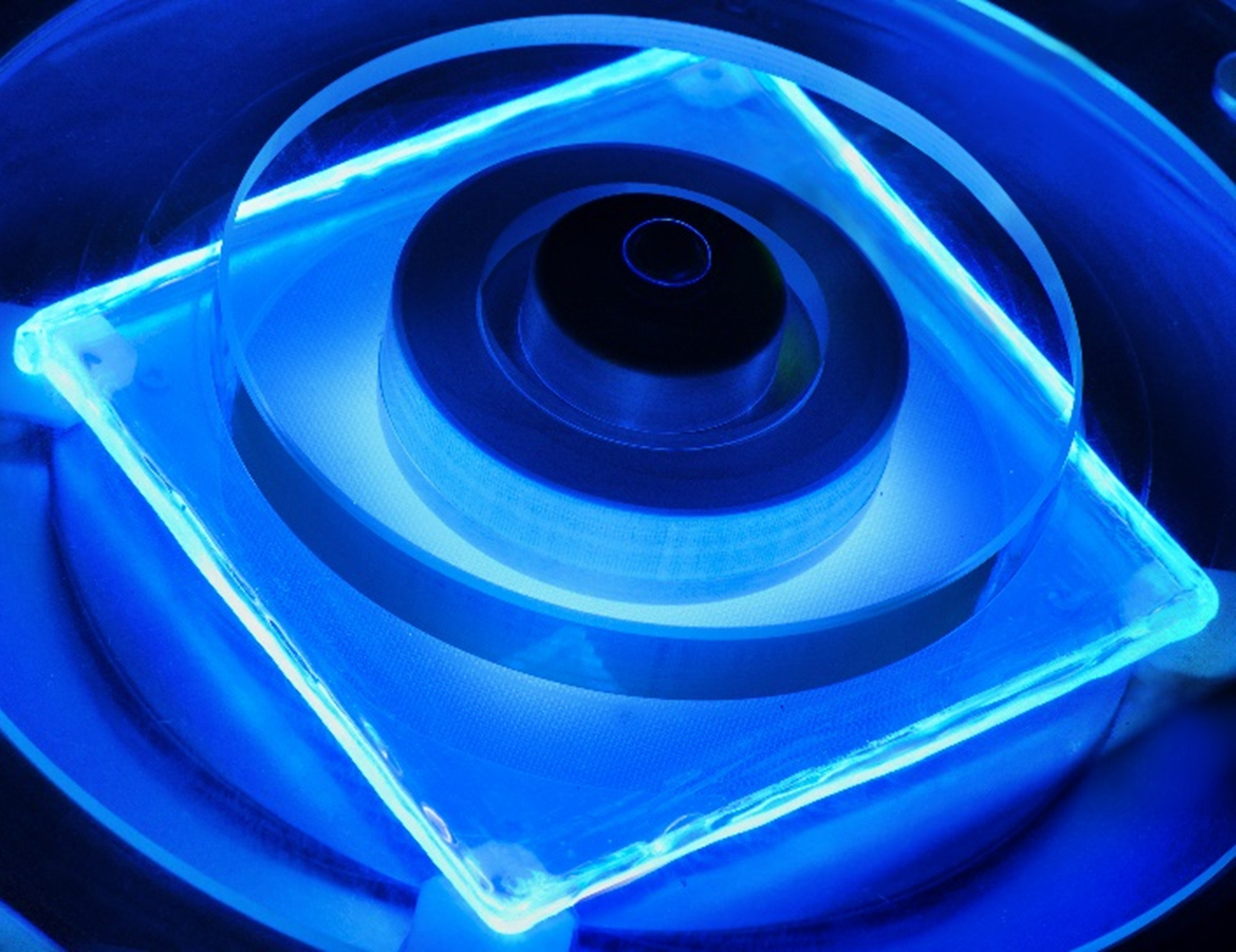With robots to hygienic cleanliness?
Since October 2020, twelve institutions of the Fraunhofer-Gesellschaft have been working on the development of new technologies that enable service robots to clean and disinfect public buildings and public transport in a targeted and resource-saving manner. Led by the Fraunhofer IPA, the partners in the "Mobile Disinfection" (MobDi) research project, which has now been successfully completed, joined forces within the "Fraunhofer vs. Corona" program to contribute to a "New Normal" in the lasting pandemic. The Fraunhofer Institute for Organic Electronics, Electron Beam and Plasma Technology FEP examined how effective these robots disinfect.


Due to Corona, hygiene is once again in the focus of public attention. The viruses are mainly transmitted via aerosols. However, not only due to the current incidence of infections hygiene should play a significant role in everyday life and public spaces, because 80 % of infections are not transmitted through the air, but through physical contact with hands and objects.1 Cleaning helps? – Not quite, because a study with 1000 frequently touched surfaces in hospitals showed, that only 47 % of the surfaces were clean after the cleaning process.2 The main problem were not the cleaning agents and disinfectants, but the correct execution of the disinfection. Robots as autonomous cleaning and disinfection tools can create significant improvements at this point. Within the Fraunhofer-internal project MobDi, robots were developed which can be equipped with suitable tools depending on the surface to be cleaned. These robots can be particularly useful in areas where there is high fluctuation and surfaces are frequently touched, which then need to be disinfected properly. For this reason, the scientists focused on the medical and public sectors. The challenge was to find suitable disinfection methods that efficiently kill germs while still being economical in terms of time and possible material damage.
The scientists used various disinfection tools on the robots - a dry steam vacuum cleaner, an UV LED emitter and a plasma jet (cold plasma) - to develop the mobile disinfection technologies. In addition, the combination of two beam sources (a combination with UV radiation and plasma) was tested to ascertain possible synergetic effects.
But are the surfaces treated by robots really germ-free? Within the project, Fraunhofer FEP had the task of finding out the exact answer.
"Together with Fraunhofer IFAM, which was responsible for the virological research, we carried out an analysis of the antimicrobial effectiveness of the developed disinfection tools. To do this, we have developed a test regime at Fraunhofer FEP which is as close to reality as possible," explains project manager at Fraunhofer FEP, Linda Steinhäußer. "We used three different test germs for this purpose. Specifically, these were the model bacterium E. coli, the bacteriophage Qβ and, for the UV tools, additionally the highly UV-resistant B. subtilis spores. The disinfection results were then checked on polymer surfaces (ABS, PVC) and brushed stainless steel."
In the microbiological investigations, the surfaces were first sterilized to achieve a germ-free initial state. Then they were specifically contaminated with small drops of the germ suspension and this contamination was dried for a considerable time. Now the surface was treated with the respective disinfection tool. The subsequent analysis of the surface for remaining germs provided evidence of the disinfection success. The highest biocidal effect with up to 99.999 % Mortification was achieved by pure UVC radiation. This was equivalent to a complete killing of E. coli and a strong reduction of bacterial spores and viruses. A similarly good result was provided by the combined treatment with UVC radiation and plasma. The pure Plasma treatment achieved comparatively low germicide rates of < 90 % for bacteria and up to 90 % for viruses on dry surfaces. By moistening the surface before plasma treatment, the bactericidal effect could be increased to 99 %. The dry steam vacuum cleaner achieved an average bacterial reduction up to 99 % on the surface of the samples. The bactericidal effect was also shown to be dependent on the surface to be cleaned. In the future, the results of the microbiological examination and the possible material investigated at the Fraunhofer IST will serve as a decision-making aid for the robots to select the most suitable disinfection tool for the respective surface.
About the project
Full project title: Mobile Disinfection - MobDi
Duration: 01.10.2020 until 30.11.2021
Website: www.mobdi-projekt.de
Funding: The project is part of the "Fraunhofer vs. Corona" program, which supports numerous other initiatives for pandemic prevention.
 Fraunhofer Institute for Electron Beam
Fraunhofer Institute for Electron Beam